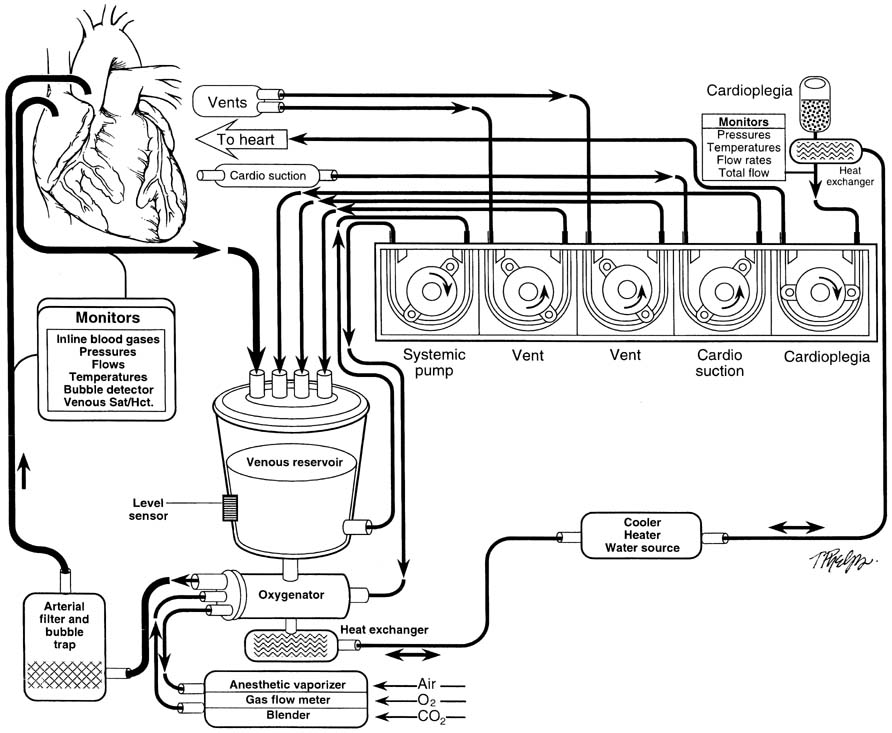 |
 |
Figure 50-31
Illustration outlining the essential features of a typical
cardiopulmonary bypass circuit. Venous blood is drained into a venous reservoir
by gravity (although vacuum assist devices can be added) from the right atrium by
using either a single cannula or bicaval cannulation. Blood can also be salvaged
from the surgical field and cardiopulmonary cavities and returned to the venous reservoir
by cardiotomy suckers and appropriately placed vents, respectively, thus avoiding
increases in left ventricular pressure and left ventricular distention resulting
from collateral flow in the presence of aortic cross-clamping. Blood from the venous
reservoir is pumped by a nonocclusive roller-head pump through the oxygenator to
the patient. The content of the gas flow to the oxygenator determines the arterial
blood gas and acid-base content. Various monitoring and safety devices are shown
for these circuits. Cardioplegia can also be delivered by a roller-head pump and
is monitored as shown. Both cardioplegia and the patient's blood can be heated-cooled
by heat exchangers connected to a water-based heater-cooler device.

 |
